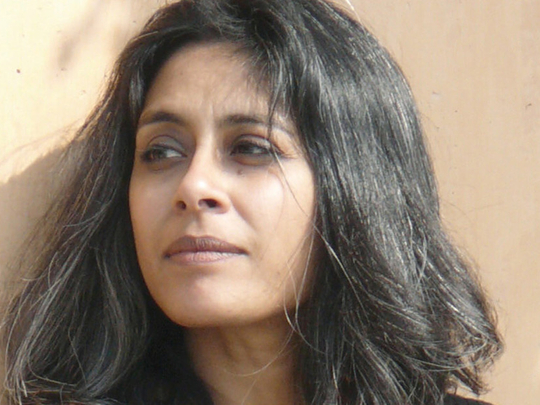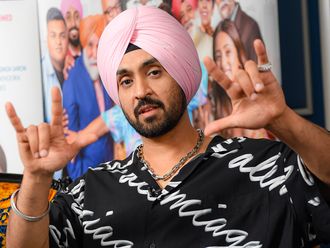
Anuradha Roy is a fearless media commentator who views her country’s political situation with dismay. “Who among us does not have friends — men and women thought to be moral and humane — that have closed their eyes to the brutal amorality of the ruling regime, seeing it instead as the political road to India’s salvation?” she wrote on the Wire, an Indian news website earlier this year, in response to a high-level campaign to absolve eight men of the rape and murder of an eight-year-old Muslim girl. And of the current political situation in India she tells me: “Inequality here has never been more catastrophic, but I think the very people the rightwing are trying to crush into nothingness are the unstoppable forces now — women and Dalits, people from the lower castes — battered but undefeated. In the past 70 years there has been such profound social change that there is no going back to the dark ages the right is trying to return us to. If I did not believe that, it would be hard to live.”
Such journalistic broadsides might lead one to expect that her novels would be equally polemical, but the longlisting of her third novel for the Man Booker prize in 2015 drew the world’s attention to a singular novelist capable of combining a no-holds barred analysis of India’s sexual hypocrisies with a delicate social comedy involving three elderly women on a temple pilgrimage.
Where Sleeping on Jupiter was sharp and contemporary, her new novel sounds a more melancholy note. All the Lives We Never Lived is set against the tumultuous history of the 20th century, as India is dragged into a war that is not of its making and then abruptly liberated of colonial rule to make what it can of independence. Roy’s approach to this upheaval is characteristically oblique. The vacated bungalows of the British Raj in 1947 create a gardening problem for a new class of civil servant unfamiliar with the concept of land as leisure; the assassination of Mahatma Gandhi a year later is seen not in terms of the communal violence that provoked it but through its impact on Sydney Percy-Lancaster, the Anglo-Indian horticulturalist who is charged with providing enough flowers for planes to strew petals along five miles of funeral route.
Percy-Lancaster is one of several characters from history in the novel; they include the poet Rabindranath Tagore and the German painter and curator Walter Spies. Roy feeds the words of these figures — gleaned from diaries, letters and newspaper columns — through the consciousness of Myshkin, a fictional apprentice to Percy-Lancaster. When Myshkin was nine, his mother left him and his father, a political radical, to run away to Bali with Spies; he narrates the story in old age, looking back on his mother’s departure, the defining trauma of his life.
“I’d been carrying him around for a while,” Roy says of Myshkin. “When I first started, what I had in my mind was a little boy who was so immersed in pictures that he became them.” Her search took her to Bali, where she discovered paintings by Spies, who was credited with raising awareness of Balinese culture in the west in the early 20th century. “When I researched Spies, it was as if the dots of light on a map were starting to blink.” It turned out that he had collaborated on an influential book about Balinese dance and theatre with another bohemian emigre, the English dancer Beryl de Zoete, whose aquiline elegance was immortalised by the photographer Cecil Beaton . Spies had also acted as guide to Tagore when the Bengali poet visited Bali in 1927 in the company of an Indian academic who kept a detailed record of their travels. Collected into a book which is only available in Bengali, the writings of “Tagore’s Boswell” — Suniti Chatterji — provided a version of Indonesian history and culture that was very different to romantic European visions of “this enchanted island”.
Roy, who writes in English but speaks “Bengali with my mother”, Hindi and English with her husband and “Hindi to the dogs”, was well-placed to process this source material — some of which hadn’t been read for nearly a century. “I really felt when I was writing this book that all sorts of windows were opening up in my head,” she says, though she was aware of the risks of over-researching. “When you’re writing a historical novel with historical figures you can become burdened by the demands of authenticity. I wanted it to sit quite lightly.”
Her first novel, An Atlas of Impossible Longing, also covered India’s early 20th-century history, though without the complication of real people. Published in 2008, it told the story of three generations of a Bengali family whose disintegrating houses speak of their faltering ambitions and fortunes — from a colonnaded riverside villa, in constant danger of being swept away, to a secretive forest house with its back to the road.
Roy herself lives on a remote hill farm in the Himalayas with her publisher husband, and the story of how they came to be there could come directly from one of her novels. Born in 1967 in Kolkata, the younger of two children, she spent her infancy living in makeshift camps as the family followed her field geologist father around some of India’s remotest regions. A picture of her mother washing clothes in a river while Anuradha and her brother look on from boulders attests to the material hardship behind this childhood idyll.
The sudden death of her father when she was seven years old grounded the family in Hyderabad, where she went to local private schools before landing a university place to study English literature in Kolkata. As the future loomed with nothing obvious to fill it after graduation, she and a group of girlfriends dug out an old typewriter and decided to apply to Oxford and Cambridge “for a lark”. To her astonishment, they wrote back and she found herself enrolling for a second English degree at what was then New Hall (now Murray Edwards College), Cambridge.
After returning home for a while to look after her mother — “my father’s death was still raw for her” — she moved north to Delhi and landed a job with Oxford University Press, where she met a promising novelist turned star editor, Rukun Advani. For three years they worked together, until he was offered a writing residency in Scotland, and she could only get a visa to join him as his wife. When they decided to get married, there were difficulties: Roy says she was informed that OUP policy prohibited married couples from working together (although OUP disputed this). She left the company and Advani resigned in protest.
“It was absolutely ghastly. We had no money. They even took the car back before we could clear out our stuff,” Roy recalls. As the news spread, outraged writers began to cancel their contracts. “One of them said they’d left OUP, so what were we going to do about it?” So began Permanent Black, the academic publishing company which the couple founded in 2000. They named it after the ink pens they both liked to use, but also to honour their sense of “otherness ... It felt like a different colour and identity from the very elite white publishing in the west.”
Starting from scratch was tough. A publisher friend gave them his mother’s old car along with the keys to a dilapidated house in the Himalayan foothills, which they restored, and where they now live and work. A writer — Sheila Dhar, to whom All the Lives We Never Lived is dedicated — bought Roy a laptop after seeing the couple squabbling over who was going to use their computer.
Permanent Black now publishes around a dozen books a year, and has a backlist of more than 400 titles, with Roy doing the design and publicity while Advani looks after the editing, rights and accounting. When her thoughts turned to writing her own novels, she assumed that she would have an easy ride — but she found herself back at the bottom of the heap, confronting 16 rejections. It was only when she bumped into the British publisher Christopher MacLehose at the London Book Fair that her luck changed. “He was very forbidding but he took 50 pages away with him, and at the end of the book fair said he’d like to read the rest.”
An Atlas of Impossible Longing, which was translated into 18 languages, was followed three years later by The Folded Earth, before they hit the Booker longlist jackpot with Sleeping on Jupiter. Roy wouldn’t publish with anyone else and doesn’t have an agent, saying “Of course I’ve had approaches, but I’m happier without one.”
The Himalayan setting of The Folded Earth gives a sense of the appeal of mountain life, with peaks glimmering in the dusk “as if jagged pieces of the moon had dropped from sky to earth”. But though Roy is a nature lover, who has carved her own garden from the rubble-strewn hillside, she is too political a writer to let herself be carried away by an ideal of natural beauty. In her novel, rumours of espionage and border raids swirl around a community in which a young girl is attacked by a political enforcer. Does she feel personally threatened in her mountain hideway? Not at all, she says. “Sometimes not seeing friends or having a cultural life feels very unhappy-making — and we have very shaky internet — but it’s one of the few places in the country where I feel completely safe. There’s nobody there, and I have three very large mountain dogs.”
She writes in the mornings and afternoons, spends the evening on her design work, and now has a second cottage dedicated to her pottery. She doesn’t sell it, she says, “because if it’s beautiful I wouldn’t want to part with it and if it’s ugly nobody would want to buy it”, but it means that she drinks her morning coffee from a pot she’s made herself.
In All the Lives We Never Lived, Myshkin recalls his battles with his activist father. “Could I really not see what a gigantic project there was ahead for every young, patriotic Indian. Was I blind? When our just-freed country had to be pulled out of poverty, hunger, violence, illiteracy — what I wanted to do was grow flowers?”
There’s something of both father and son in Roy, who sits in her garden raging at a nation that is still beset with poverty and violence 70 years on. Days after our interview, as she is making her way home, she sends an email suffused with the observational detail that brings such a bloom to her fictional world. “Here we have rain,” she writes. “I am briefly in Delhi, green and monsoony, and saw a peacock pirouetting in a garden yesterday, which transformed this grubby old city in one second flat.”
–Guardian News & Media Ltd









